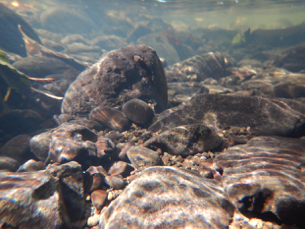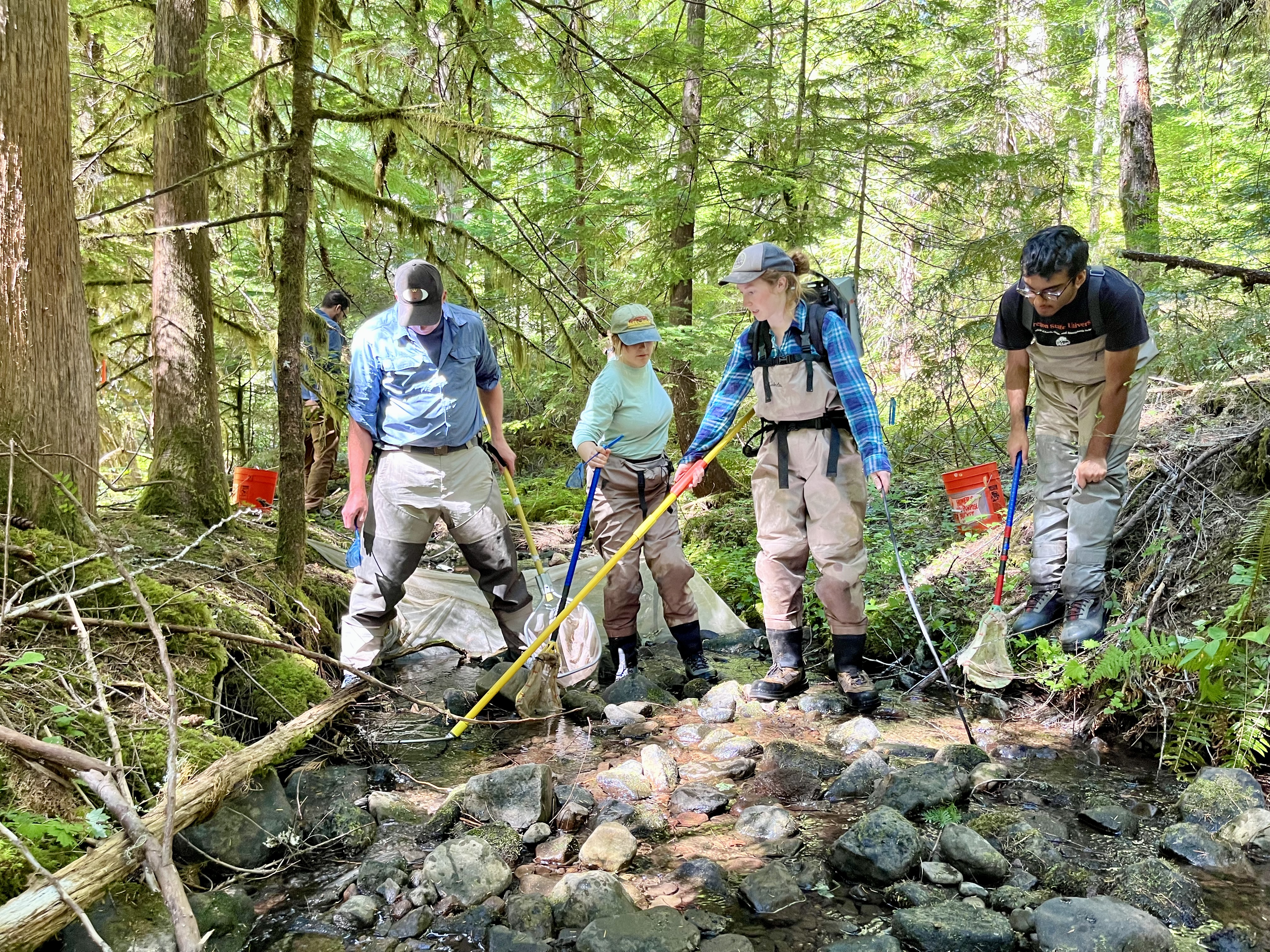Geomorphology and Stream Ecology
Fluvial processes describe the movement of water and sediment through river networks. These processes are influenced by geology, topography, land cover, and climate settings. Even though the movement of water and sediment from continents to the ocean has intrigued geomorphologies for over a century we are still trying to understand how river networks convey water and sediment from their watersheds, yet maintaining relatively stable geometries. Understanding fluvial processes would allow predicting the amount of sediment produced and transported by a river, the frequency of the sediment transport events, and the impacts that changes in land cover type and climate could cause in river systems. Besides its importance for water resources management, sediment transport is relevant to river ecology because it can disrupt or modify the channel bed and therefore the habitat of benthic organisms located at the bottom of rivers food webs.
Evaluation of the effectiveness of large wood as a restoration strategy to improve fish habitat Large wood additions are often part of fish habitat restoration projects. However, there is limited information about the spatial-temporal variability in hydraulic changes after large wood additions. We investigated reach scale hydraulic changes triggered after the addition of LW that are relevant to juvenile Coho Salmon survival. Sponsor by Fish and Wildlife Habitat Managed Forests Research Program, OWEB, and Spirit Mountain Fund.
Read more here
Bed load transport modeling. New equation using 2D shear stress distributions Bed load transport formulations for gravel bed-rivers are often based on reach-averaged shear stress values. However, the complexity of the flow field in these systems results in wide distributions of shear stress, whose effects on bed load transport are not well captured by the frequently used bed load transport equations, leading to inaccurate estimates of sediment transport. Here, we modified a subsurface-based bed load transport equation to include the complete distributions of shear stress generated by a given flow within a reach. The equation was calibrated and verified using bed load data measured at Oak Creek, OR. NSF Award #1619700
Relationship between stream sediment transport and primary production Primary production provides the fundamental source of energy for most life on earth, and therefore understanding what controls primary production is key to understanding ecosystems. In streams, relevant research has focused on the influence of light and nutrients, but the role of underlying geology and sediment transport has not been well explored. The algae that dominate primary producers in headwater streams live on rock substrates. Flow events that mobilize those rocks can scrape algae away and reset the system to low production levels. Understanding controls on frequency of substrate scour and transport in a steam is therefore fundamental to understanding the temporal and spatial dynamics of primary production. NSF Award #1619700.
Lithology, channel geometry, and bed sediment organization hillslope-coupled streams: In steep settings, hillslope and in-stream processes are often closely connected. Coarse sediment and large wood can enter streams directly, affecting channel geometry and sediment transport downstream. Predicting these factors at the landscape scale requires better understanding of hillslope–channel interactions. Therefore, we study the longitudinal patterns of channel geometry in two neighboring watersheds in the Oregon Coast Range, with differing lithology (volcanic and sedimentary) that may influence their hillslope and in-channel processes differently. NSF Award #1619700

